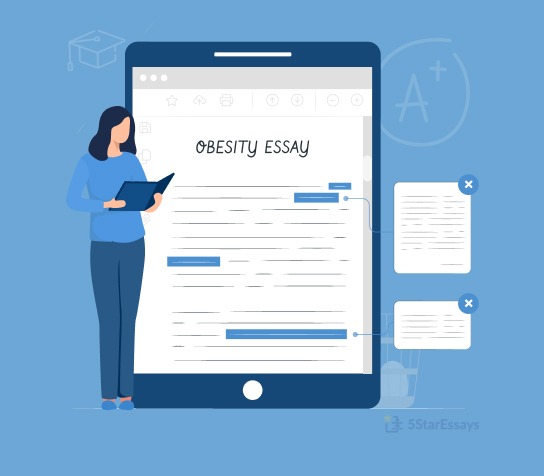Appendix Writing Definition
An appendix is not a necessary section of a research paper, but it contains additional information that does not fit in the main body text. Use a separate appendix for each topic or data set and always have a descriptive title of its contents.
The main purpose of writing an appendix is to:
- Include detailed information in the paper.
- Put maps, photographs, and other non-textual; elements.
- Provide information that supports your study.
Moreover, an appendix contains the following information:
- Maps
- Tables and figures
- Website links
- Letters and emails
- Interview transcripts
- Detailed descriptions of equipment used
- Questionnaires and survey forms
- Graph and charts
Also, the appendix is placed at the end of the APA-style paper after the reference list. Remember that if you don’t mention any information from the appendix, it should not be included in your research paper.
Appendix Writing Format
When you add an appendix to your paper, you should follow the proper format. Without proper format, your research paper becomes too complicated for the readers.
Here are some rules for formatting the appendix.
- All tables, figures, and other visuals should be labeled with a letter.
- Write it after the reference list at the end of the document.
- Use a separate page for each type of information.
- The appendix heading should contain a letter or number.
However, you should consult your professor for the formatting requirements because each university and teacher has different guidelines.
How to Write an Appendix?
You understand the appendix's format, but do you know how to write one? As a result, we've compiled a list of steps to follow when composing the appendix for your research paper.
1. Insert Raw Data
An appendix is where you can put raw data that might not get much attention but will help support your work. However, you should only provide information pertinent to the topic, which is understandable to readers.
Raw data can be any relevant information useful for your paper and support the results or facts you mentioned in the main body.
2. Include Visual Documents
You can include images, charts, graphs, tables, maps, diagrams, and any visual document if required. It will help the readers to understand the content easily.
Moreover, the visual content main benefit is that it will not take space in the main body. However, it will reference the main body and allow the reader to know more information.
Also, cite them properly if you include graphs, charts, and other visuals from other research work.
3. Instruments Used
When you mention the tools and materials you used when conducting the research, it will benefit your readers. You can mention whatever you used, such as a camera for photos, tape recorder, or any other device.
It will help the readers understand how you use this device for conducting research and which methods and techniques are used.
4. Transcripts of Interviews and Surveys
Interviews and surveys are the main part of the research; they give a better idea about your paper. If required, the photocopies of the handwritten work and contents or online copies are also included in the appendix. However, it depends on your research topic.
5. Formatting the Appendix
The appendix is an important part of the paper, and you should pay attention to this. For a well-written appendix, you should follow some formatting rules, such as:
- At the top of the page, the appendix should be titled.
- Order the content according to its appearance in the text.
- Use capital letters or a sentence case for an appendix title.
- Place the appendix after the reference list.
- Add page numbers at the center or bottom right corner of the page.
- Start each appendix on the new page.
- Use the same font type and size.
6. Polishing the Appendix
It is an important step that every student should do before submitting their work. Revise the appendix for clarity and make sure that all relevant information is added. Remove information that is not relevant and not related to your topic.
Further, remove all grammar and spelling errors. Read it several times and try to make it error-free before submission.
Appendix Writing Examples
A well-written example always helps the students in their writing phase. Thus, for your help, we compiled some great examples that our professional writers write
Tips for Writing an Appendix
Here are some tips that help you write the perfect appendix without difficulty.
- Add all appendices at the document’s start in the table of contents.
- Add information that is too detailed for the main body of your paper.
- Add in-text citation if you refer to a source in the appendix.
- When more than one appendix writes either appendix A, appendix 1
- Use the proper format for MLA, Chicago, and an APA paper.
- Always refer to the appendix to the main text.
- Review and revise it before submitting.
- No gap between the numbering when you move from main text to appendix.
- In MLA style, the appendix appears before the Work Cited page.
- You can also add hand-written notes and analyses in your appendix.
- Avoid writing two appendices that deal with the same thing.
- The content in the appendix is easy to see and understand. It should not take a large amount of time or be too complex for the readers.
- Get help from examples and samples.
Now, you know how to write an appendix. However, if you still have any confusion, simply consult 5StarEssays.com. Our expert writers will always help you and make your writing phase stress-free. They have been in this field for several years and help thousands of students worldwide.
So, why wait? Fill the order form now and get the top-notch write my essay service.




























 Not seeing it? Check Promotions or Spam — inboxes get protective.
Not seeing it? Check Promotions or Spam — inboxes get protective.